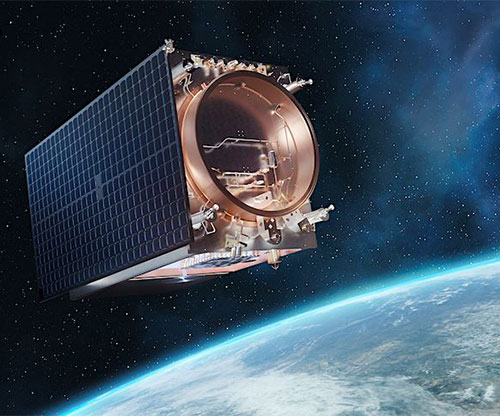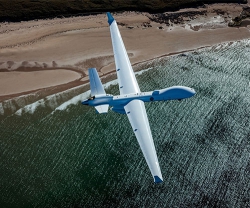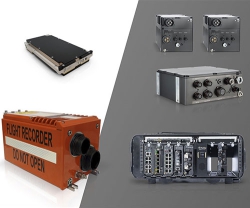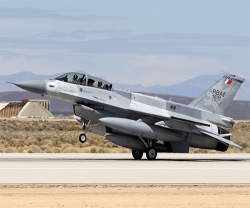The first Lockheed Martin LM 400, a flexible, mid-sized satellite customizable for military, civil or commercial users, rolled off the company’s digital factory production line and is advancing toward its planned 2023 launch.
The agile LM 400 spacecraft bus design enables one platform to support multiple missions, including remote sensing, communications, imaging, radar, and persistent surveillance. Lockheed Martin invested in common satellite designs to support demand for more proliferated systems, high-rate production, and affordable solutions. The LM 400 is scalable and versatile starting at the size of the average home refrigerator, with capability to grow for higher power and larger payloads and packaged to enable multiple satellites per launch.
The LM 400 bus can operate in low, medium or geosynchronous earth orbits, providing greater flexibility than other buses in this class. The LM 400 space vehicle is compatible with a wide range of launch vehicles in a single, ride-share or multi-launch configuration.
“This resilient LM 400 satellite bus was created completely digitally, offering greater flexibility, commonality, and the ability to rapidly configure to order across missions,” said Matt Mahlman, Director of Strategy and Capture at Lockheed Martin Space’s Satellite Bus Center of Excellence.
“Given that, we can produce these new satellites faster and at a much lower cost to our customers,” he added.
For potential military applications, the LM 400 conforms to Modular Open Systems Architecture standards for interoperability with other platforms from all the services. This design helps unlock the U.S. Defense Department’s vision for joint all-domain operations and joint all-domain command and control.
Each LM 400 spacecraft includes SmartSat™, Lockheed Martin’s software-defined satellite architecture. SmartSat™ provides even greater mission adaptability and can perform onboard “Edge” data processing, which reduces the time it takes to get actionable data into the hands of mission operators and decision-makers on the ground.
The LM 400 is already under several contracts, most recently being named as one of the satellite buses supporting U.S. Space Force’s planned Missile Track Custody program in medium earth orbit.
The first LM 400 off the production line - coined the LM 400 Tech Demonstrator - is also the first of a planned regular series of self-funded on-orbit LM 400 technology demonstration missions.
“Our end goal is to accelerate the technical maturity of our satellites and advanced payloads, as well as showcase how new capabilities can be delivered quickly to customers,” said Mahlman. “Lockheed Martin set out on a journey to develop and deliver a highly capable space vehicle faster than ever before; and what we proved is the ability to move from concept design to an integrated spacecraft in half the time.
The first LM 400 Tech Demonstrator planned for a 2023 launch will carry a Lockheed Martin-produced narrowband communications Electronically Steered Array (ESA) payload. The next LM 400 demonstrator, expected to launch in 2024, will test synthetic aperture radar-capable ESA on orbit using the LM 400 platform.
Headquartered in Bethesda, Maryland, USA, Lockheed Martin Corporation is a global security and aerospace company that employs approximately 116,000 people worldwide and is principally engaged in the research, design, development, manufacture, integration and sustainment of advanced technology systems, products and services.






















